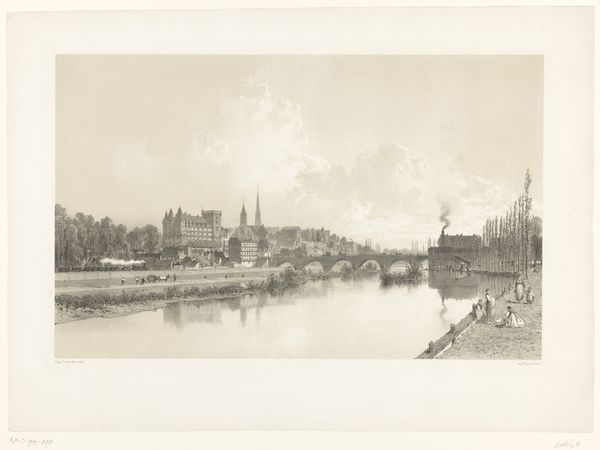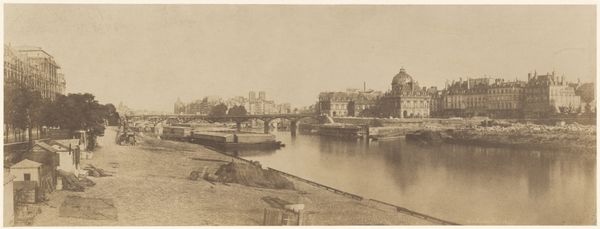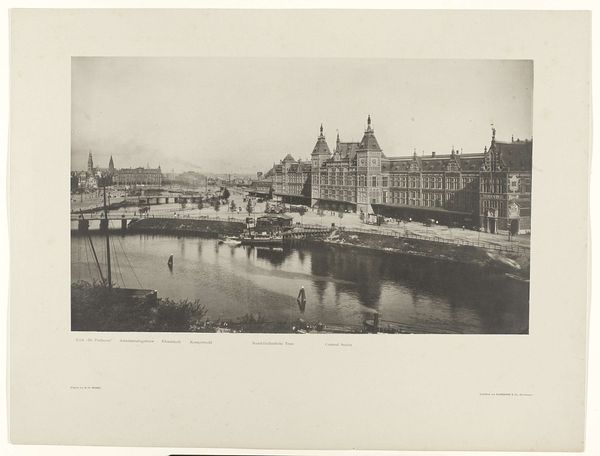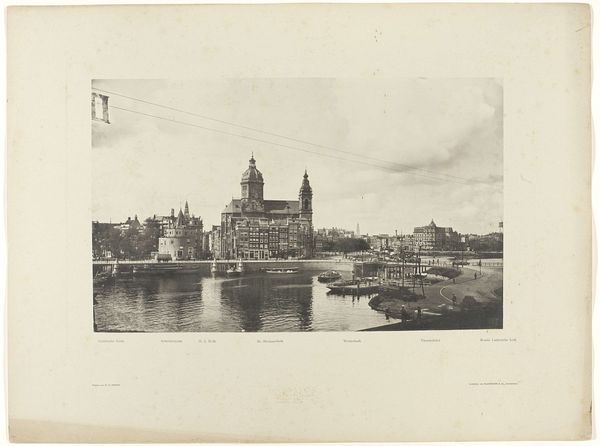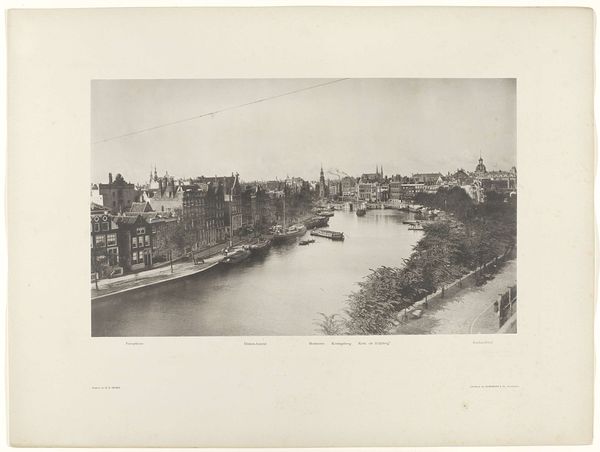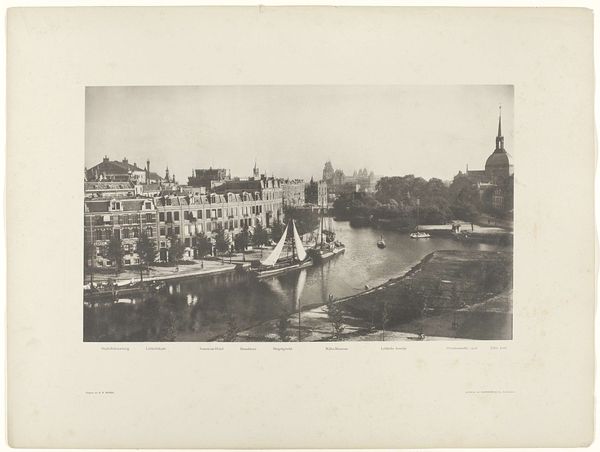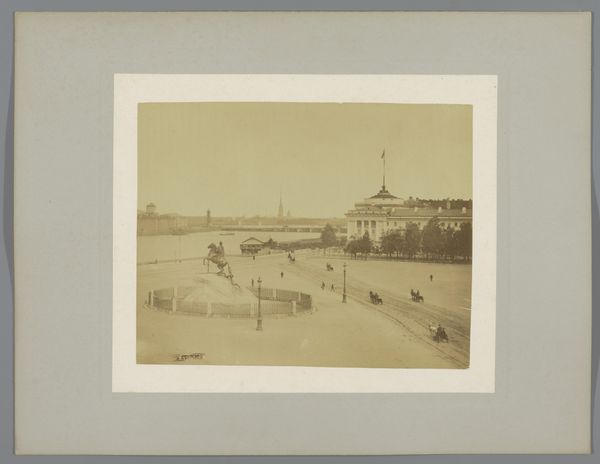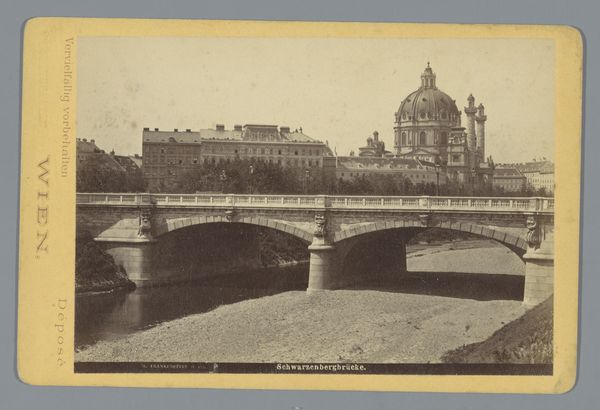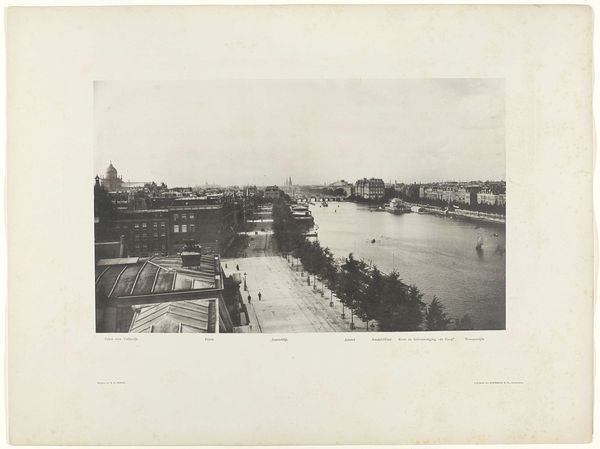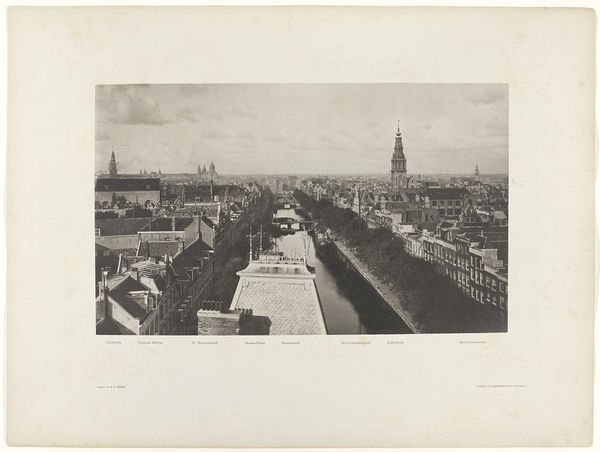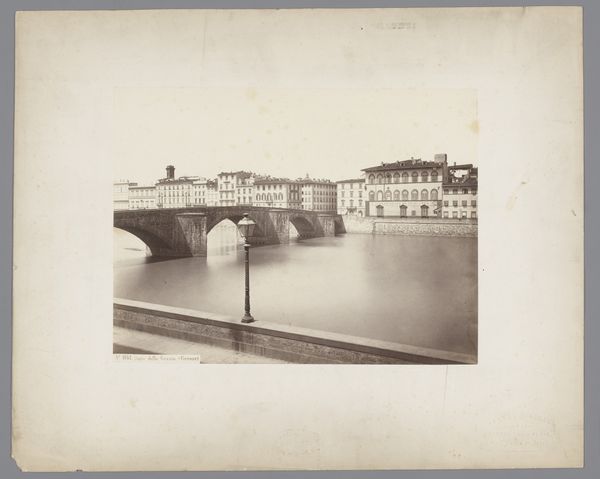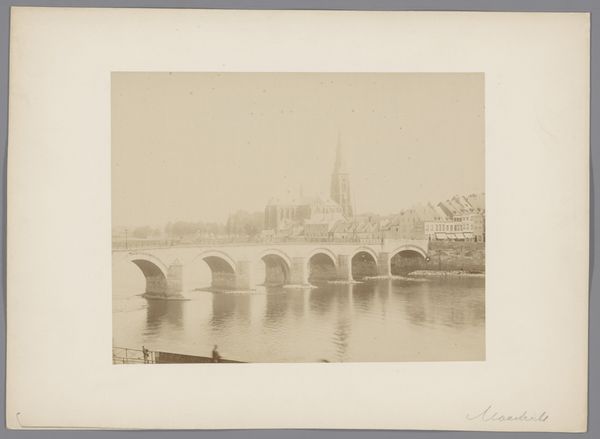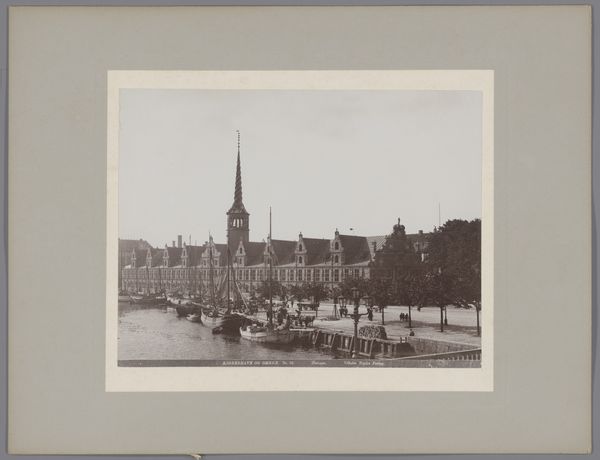
Koninklijk paleis gezien van uit Skeppsholmen, Stockholm, Zweden c. 1880 - 1900
0:00
0:00
photography, gelatin-silver-print
#
16_19th-century
#
pictorialism
#
landscape
#
photography
#
gelatin-silver-print
#
cityscape
Dimensions: height 195 mm, width 265 mm, height 301 mm, width 400 mm
Copyright: Rijks Museum: Open Domain
Curator: Looking at this photograph, the cool tones really give it a somewhat austere feel, wouldn’t you agree? It's so different from the colourful and energetic photos of Stockholm we see today. Editor: Indeed. This gelatin silver print, thought to be the work of Johannes Jaeger sometime between 1880 and 1900, shows us a view of the Royal Palace from Skeppsholmen. What's interesting to consider is how this kind of photography became a tool for civic self-representation. Curator: Absolutely. This would have been during the rise of pictorialism, when photographers were keenly interested in proving their artistic skills. And a cityscape like this, a controlled vista emphasizing grandeur and civic order, suggests the success of modernization, doesn't it? Editor: Precisely. And we should also consider what was left *out* of the image. Were working class neighborhoods deemed unsuitable for the ideal Stockholm image? The decisions on what to include speak volumes about the city's desired self-image. The production of prints like this would have certainly shaped public perception of the growing metropolis. Curator: I am also struck by how accessible photography made such images to a broad public, enabling the wide dissemination of constructed urban ideals. You start to see the implications when you look at images of worker housing and squalid living conditions of the time; such images serve to highlight the existing imbalance of capital. Editor: Definitely, thinking of this work within its broader socio-political context helps us see how artistic mediums like photography participate in the distribution of power. That makes me view the careful composition – the balance of light, the lines of the bridge, even the choice of viewpoint – in a different way. Curator: Agreed. It's remarkable how much this one photograph can tell us about the material production of images and the social context of Stockholm at that time. Editor: I think understanding these historical contexts encourages all of us to think more critically about the photos we see, share, and consume every day.
Comments
No comments
Be the first to comment and join the conversation on the ultimate creative platform.
